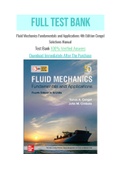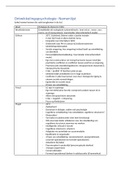Exam (elaborations)
Fluid Mechanics Fundamentals and Applications 4th Edition Cengel Solutions Manual With Question and Answers, From Chapter 1 to 15
Course
Fluid Mechanics Fundamentals and Applications 4th
Institution
Fluid Mechanics Fundamentals And Applications 4th
Fluid Mechanics Fundamentals and Applications 4th Edition Cengel Solutions Manual .
[Show more]
Preview 4 out of 1677 pages
Uploaded on
October 26, 2022
Number of pages
1677
Written in
2022/2023
Type
Exam (elaborations)
Contains
Questions & answers
Institution
Fluid Mechanics Fundamentals and Applications 4th
Course
Fluid Mechanics Fundamentals and Applications 4th
By: seongjoo0420 • 4 weeks ago
By: herbertchao • 1 year ago
$18.46
100% satisfaction guarantee
Immediately available after payment
Both online and in PDF
No strings attached
Full Test Bank





